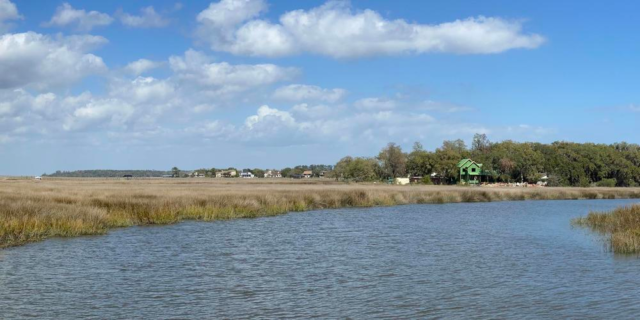 The History of Igbo Landing in Southern United States
The History of Igbo Landing in Southern United States
Introduction
Europeans from various countries in Europe including Great Britain, France, Germany, Holland, Spain, Belgium, Portugal and others would sail down the Atlantic ocean to West Africa and to the Bight of Benin and Biafra now located in present day Nigeria with the purpose of capturing and in some cases buying native Africans and then transporting them to America and the Caribbean Islands where the Africans were sold to waiting slave merchants in New England towns, mid Atlantic towns and deep south of the United States.
The Europeans used any crooked and criminals means available to them to acquire these innocent people they called slaves. They brought and introduced gun powder, and firearms to the native African tribes and encouraged them to fight among themselves and in the process the Africans with weapons provided by the Europeans generally subdue one another and capture vulnerable people in the process, and then sell their brothers and sisters to the Europeans. At any rate this is not in any way a defense of the equally criminal role played by some native Africans in the slave trading era. But that matter is beyond the scope of the subject at hand.
In most cases the slave trade was largely done through barter process because at that time there were no money currency instruments in Africa so the Europeans brought items such as Firearms, gun powder, tobacco and other items and exchanged such items for barter slave trade.These innocent and vulnerable men and women they referred to as slaves are then transported against their will and wishes to the new World-America, and the Caribbean and other islands where the Africans were sold to waiting slave merchants for work in Cotton and tobacco plantations and other agricultural farming establishments at that era. “The island of Gorée lies off the coast of Senegal, opposite Dakar. From the 15th to the 19th century, it was the largest slave-trading center on the African coast” Other seaports slave trading establishments in West Africa included Gold Coast Castle located in present day Ghana in fact , Ghana was previous known as “Gold Coast” before its independence. Coastal towns in Republic of Benin, Togo and Western Nigeria were also big slave trading centers including ports of Lagos and Badagry .On the eastern side of Nigeria, coastal towns of Calabar and Opobo were significantly used as well.
Many seaports in Europe also served the Colonial interest in Slave trade. The largest and busiest slave trade seaport in Europe was none other than Liverpool in England.Transatlantic slave trade historians say that Liverpool handled more Slave trade expeditions than the slave seaports in France combined. Another significant seaport in terms of volume of Slave ships using it was the seaport of Zeeland in Middelburg Netherlands. According to an article published by online website “ It is still something of a guilty secret, but Middelburg grew prosperous from the slave trade. In the eighteenth century, ships of the Middelburg Commerce Company, the MCC, carried more than 268,000 African slaves across the Atlantic, returning to the home port with holds filled with sugar, tobacco, cotton and cocoa beans”.
In France seaports like Nantes, Bordeaux, La Rochelle and Le Havre were also significant players for Trans Atlantic slave trading in France and beyond. In the United States Slave markets were established in areas of close proximity to the seaports to facilitate the buying and selling of Black slaves from Africa .
The Story of Igbo Landing
The amazing story of Igbo Landing is an intriguing story and a resistance of the criminal enterprise known as “Slave Trade” largely done by White Europeans and their American collaborators.
Dunbar Creek in Glynn County, Georgia is the venue of one of the largest revolts and resistance of Slave Trade in Southern United States. This protest has been described by some historians as the first civil rights revolt in the United States. Here the author warns that it is incongruous and wrong for revisionists of history to simply characterize what happened in Dunbar Creek also know as- “Igbo Landing” as mass suicide because it is not a mass suicide as implied. Please follow me and as you read the story of Igbo Landing you will come to grips with my thoughts and logic to enable you the reader, fully understand and form your own opinion about the event that unfolded at Dunbar Creek over two hundred years ago.
In May 1803 Seventy five Igbos and other West African natives were captured in unknown areas of Igboland with the criminal purpose of selling these innocent men and women to slave merchants in America . A ship called “Wanderer” was waiting at the coastal areas of Bight of Biafra, The 75 men and women and other west African natives were soon loaded into the “Wanderer “ship all in chains and were forcibly transported to America against their will.
The Igbos and other west African natives all survived the dangerous middle passage often many do not survive the treacherous journey across the Atlantic. One advantage these captured Igbos had was their ability to discuss their plans in their native Igbo Language which the captors did not understand. Among the Igbos were two high ranking elders possibly Chiefs. One may ask how could Igbo Chiefs with their status in Igbo land be among those being sent to America to serve as slaves? Well as stated earlier when one village subdues the other thanks to weapons provided by European slave lords every one captured in the village including the village chiefs are handed over to the Europeans for slave bartering purposes.
Special appreciation to our brothers and sisters the African descendants, the Gullah Geechee community of Dunbar Creek in Glynn County Georgia who have kept the Igbo Landing story alive for the past 200 years. Some of them have strong cultural links with Igbos. The Gullah Geechee Communities are scattered throughout the southern coastal regions of North Carolina, South Carolina , Georgia and Florida.
In August 11 and 12, 2023 the Council of Igbo States in America (CISA) is staging an event at Igbo Landing to Celebrate and commemorate the bravery of the 75 Igbo Men and Women who resisted and challenged the injustice and dehumanization of Humanity through European Slave Trade. All are invited. Contact CISA Planning Committee Chair Mazi Emeka Nwosu at (757-305-7489) or CISA President James Umekwe at(301-257-4354) for more information.
About the author of this Article








Thanx for this much needed history. It’s sad that this story and many many more are purposely kept off the record and out of school books. It’s up to us to teach our children, we’re seeing that fact amplified more and more. I will be sure to share what I’ve learned from this article. Respect to Chief Okechukwu Paul Oranika & the Igbo Land ancestors.